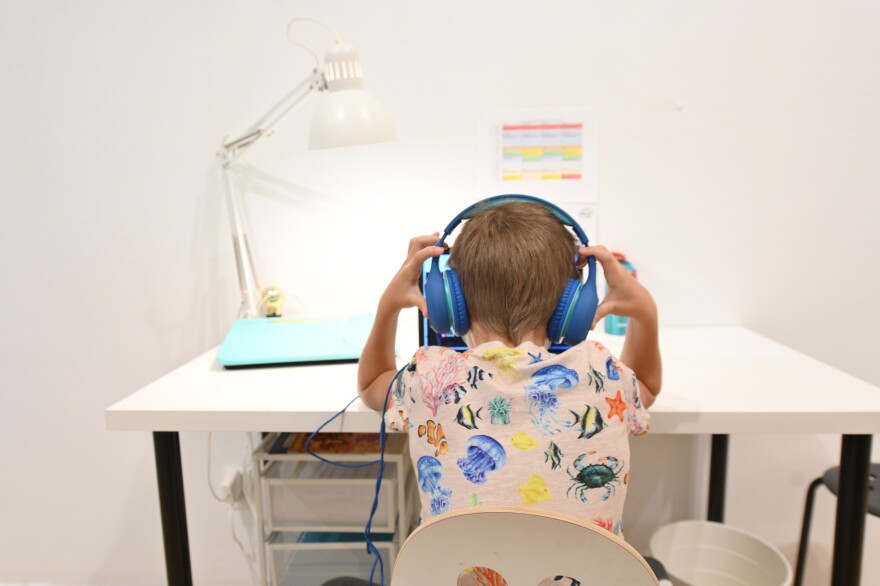Federal funding that connected more than 60,000 students to the internet is ending, but Los Angeles Unified is pitching in $10 million to keep families online next school year.
The funding for student home internet is part of the $18.4 billion budget approved by the board Tuesday.
“All my colleagues realized during the pandemic just how crucial it was for students to have high speed internet access at their home,” said Board Member Tanya Ortiz Franklin. “It's become how we teach and learn.”
Many students have yet to regain academic skills lost during the pandemic. While LAUSD students made small gains on the statewide standardized math test last year, reading and writing scores declined.
“If we really want to close opportunity and achievement gaps for kids, then we have to give them additional learning time,” Ortiz Franklin said.
How big is LAUSD’s digital divide?
In spring 2020, researchers estimated that about one-in-three LAUSD households lacked the devices or the broadband connection required to access the internet.
-
LAUSD will continue to offer free internet to families in need. Families can apply online or by calling 213-443-1300.
-
“There may be some adjustments based on socioeconomic status but, as of right now, any student or family can request connectivity,” said a district spokesperson in a statement to LAist.
The divide was greater in South L.A., Compton, Huntington Park, El Monte, where just half of families had the resources to get online. Black and Latino students were less likely than their peers to like in a household with internet access.
Ortiz Franklin saw this firsthand when she logged into Zoom classrooms in her district, which includes Watts and South L.A. Students who didn’t have enough signal to connect by video appeared as black boxes on the screen and rarely spoke up during the lessons or interacted with their peers in the chat.
“The quality of both teaching and learning was suffering when internet connectivity was unstable,” Ortiz Franklin said.
How has LAUSD tried to address internet access?
When the pandemic started, the district initially pledged $100 million to purchase Chromebooks and hotspots for disconnected students, but some low-income families still struggled to access service or were misled by providers.
LAUSD announced free home high-speed internet for every student in the district in 2022. The initial $50 million from the federal Emergency Connectivity Fund purchased tablets, laptop, broadband hardware and monthly internet through AT&T and Spectrum. Right now 62,534 students and their families rely on broadband and mobile hotspots paid for by the program.
Until the district intervened, the program was set to expire Saturday, June 30.
“We still need more permanent solutions that give people access to high speed, quality internet — and that is not something that the district has the authority or the power to resolve,” said Elmer Roldan, executive director of the nonprofit Communities in Schools of L.A. The group is also part of the Digital Equity L.A. coalition, which is working to expand access to fast, reliable and affordable internet.
Roldan praised the district for investing its own money to support families who need broadband, especially considering its “difficult” financial situation. But he said leaders should be focused on a more sustainable, long-term way to connect students, as many reported having issues with school-issued mobile hotspots, which can be slow and unreliable depending on where you live.
“We’re living in the age of AI and some of our families still can't connect to Wi-Fi,” he said.
What happens after next year?
Roldan said the district should promote the free internet service to families, and then document the demand for it. He also wants LAUSD to “be a partner” in calling for more affordable service from local internet providers.
“If the demand exceeds the $10 million that it set aside, then that's a big leverage point for how it goes to the federal government to ask for additional support, or to the state for that matter,” he said.
Statewide, USC researchers found that broadband connectivity for families with school-aged children peaked at 97% in 2021, but that about 4% fewer families had access in 2023.
The study noted that the expiration of school-based internet programs likely played a role in the decline — just 3% of families reported school paying for their service in 2023 compared to 15% in 2021.










